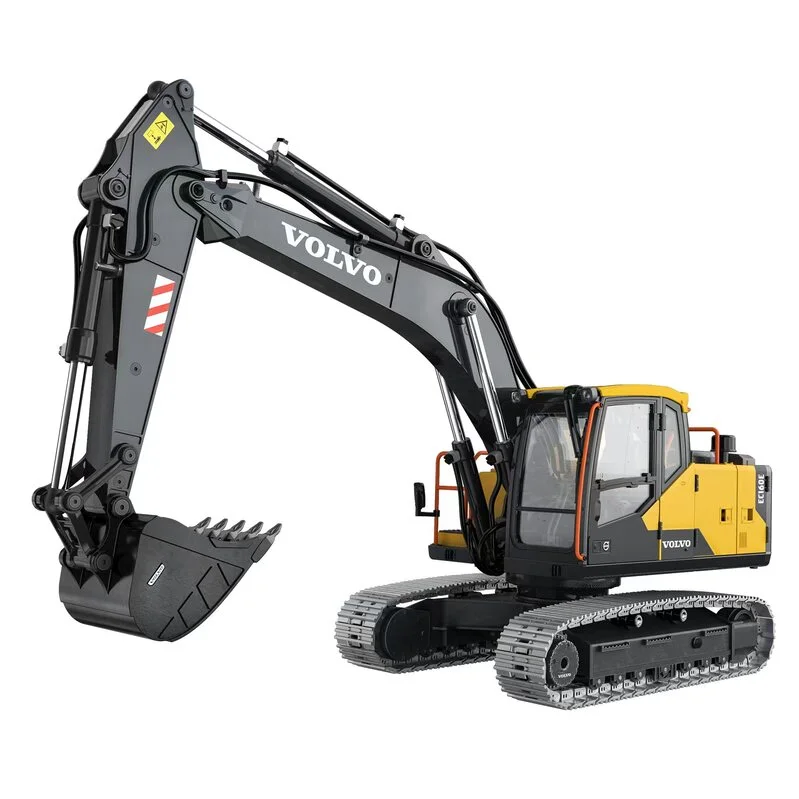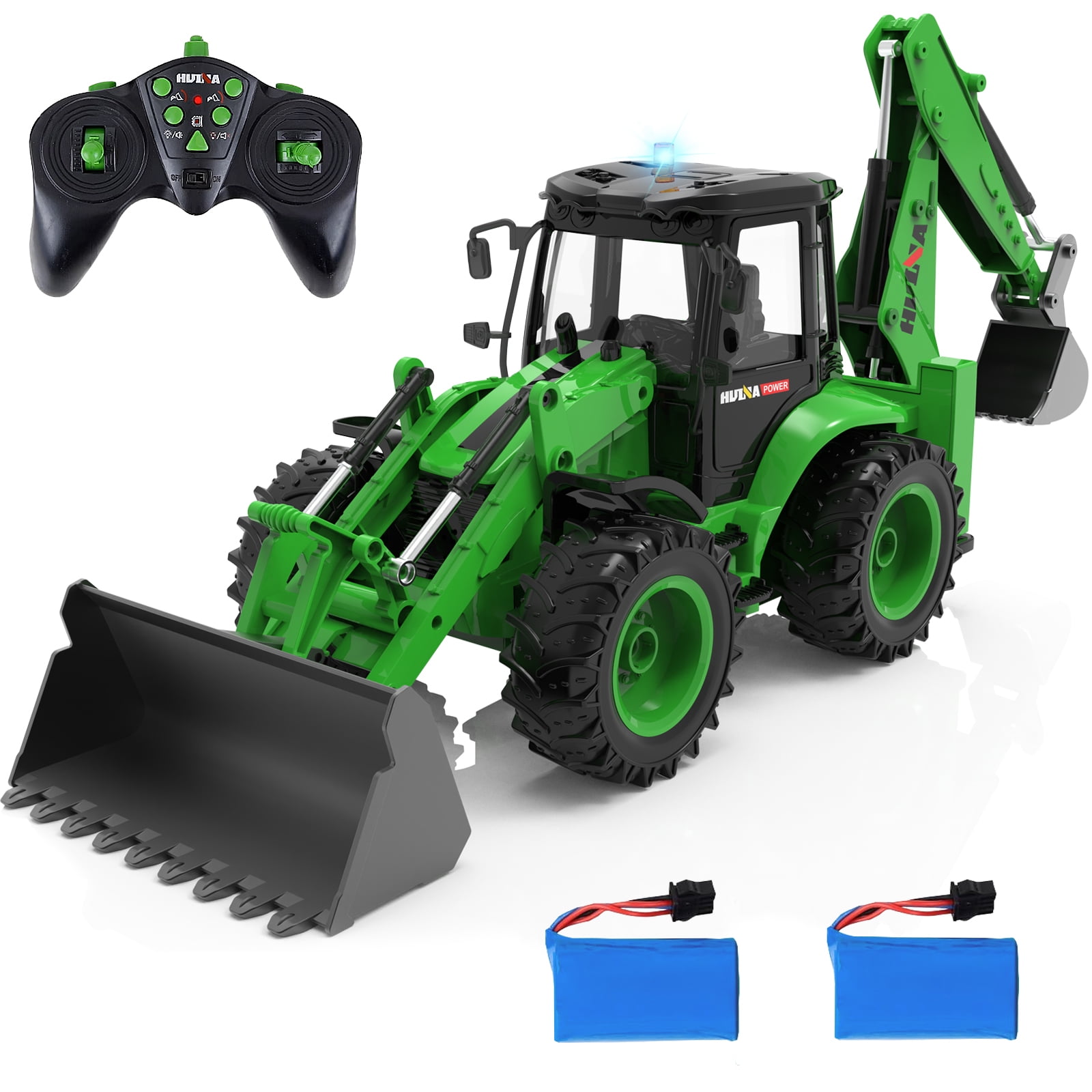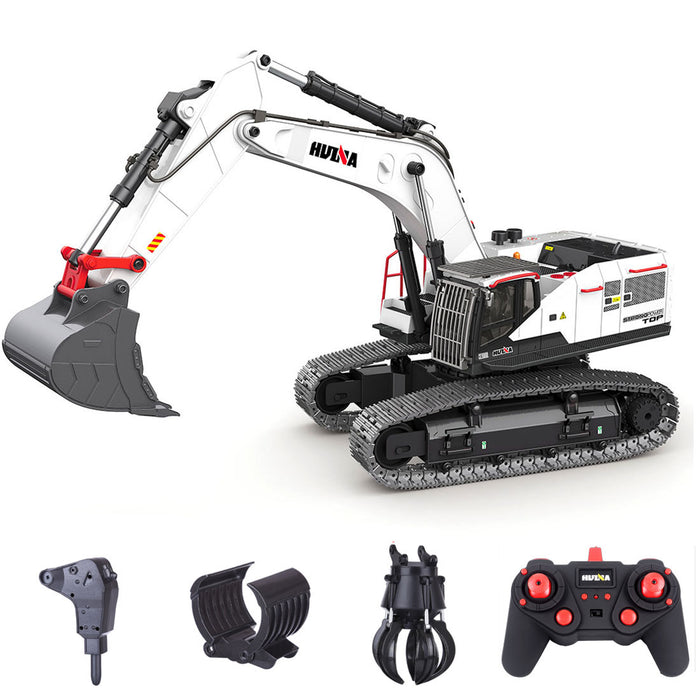The Vital Functions of Excavator That Make Things a Must-Have Device
Excavators are crucial in the building and landscape design markets. Their functional accessories allow for a series of tasks, from digging to demolition. In addition, they flaunt remarkable digging depth and reach, powered by robust engines. Operator convenience and portable designs improve functionality in different environments. Nevertheless, what truly sets excavators apart are their sophisticated hydraulic systems and sturdiness. Recognizing these attributes can clear up why they are thought about crucial tools on any type of job site.
Functional Attachments for Enhanced Capability
Excavators are powerful makers on their very own, the addition of functional add-ons substantially enhances their capability. These attachments transform a conventional excavator into a multi-purpose device, ideal for a variety of jobs. Containers, as an example, come in numerous shapes and sizes, enabling drivers to dig, scoop, and move products efficiently. Hydraulic thumbs can be added for improved gripping and handling of large things, such as logs or rocks.Furthermore, specialized add-ons like breakers and augers enable drilling and demolition job, expanding the excavator's utility on building sites. remote control excavator. Grapples are one more option, ideal for moving and sorting debris. This versatility not just raises productivity yet also reduces the need for several machines, conserving time and costs. By equipping excavators with the ideal accessories, operators can tackle diverse tasks, making them crucial in the building sector
Superior Excavating Deepness and Get To
Excavators are designed with premium excavating deepness and reach, enabling them to maneuver in limited spaces and accessibility hard-to-reach locations. This ability is vital for numerous building and excavation projects, where typical equipment might fail. With adjustable boom arms and extendable tracks, excavators can quickly navigate irregular surface while maintaining stability.The digging depth can differ substantially amongst designs, typically ranging from 10 to 25 feet, depending on the style and function. This function makes it possible for drivers to dig deep into foundations, trenches, and various other deep frameworks effectively. Additionally, the reach of an excavator permits exact digging and product handling without repositioning the equipment often, conserving time and labor costs.Ultimately, the premium excavating deepness and reach of excavators make them essential for professionals seeking to complete complex tasks with accuracy and efficiency. Their convenience improves productivity on task websites, showcasing them as a necessary device in contemporary construction.
Powerful Engine Efficiency

When it involves performance and performance on building sites, powerful engine efficiency plays a crucial duty in the abilities of an excavator. A robust engine creates considerable horsepower, enabling the device to deal with heavy-duty tasks effortlessly - remote control excavator. This strength equates into faster cycle times, enabling drivers to complete tasks much more quickly.Additionally, effective engines offer the necessary torque to take care of tough surfaces and varied loads, making certain that the excavator can carry out effectively under different conditions. Whether it is raising, excavating, or relocating products, the engine's efficiency directly impacts the overall operational performance of the machine.Furthermore, advancements in engine technology have resulted in improved fuel effectiveness, minimizing functional prices while keeping power result. Inevitably, the engine's performance acts as the backbone of an excavator, affirming its status as a crucial tool in the building industry
Advanced Hydraulic Solutions

Improved Lifting Capability
A substantial enhancement in raising capability can be credited to innovative hydraulic systems found in modern excavators. These systems use high-pressure liquid to produce greater pressure, permitting drivers to raise much heavier loads effortlessly. The design behind these hydraulics assurances peak efficiency, giving a remarkable power-to-weight proportion that boosts overall effectiveness. Consequently, excavators can take on requiring tasks, such as lifting huge products or tools, without endangering security. Additionally, the robust layout of hydraulic components adds to raised resilience and integrity, making them suitable for various building atmospheres. This improved training ability not only minimizes the time needed for projects yet likewise decreases the requirement for additional equipment, proving crucial for both performance and cost-effectiveness in the building sector.
Improved Accuracy Control
Although standard excavators often dealt with accuracy, modern hydraulic systems have actually changed control mechanisms, enabling operators to execute jobs with impressive precision. These sophisticated systems use proportional control valves that permit smoother and a lot more responsive activities, substantially minimizing the margin for error. Operators can now carefully tune the excavator's motions, making it easier to browse tight spaces and deal with fragile products. Boosted feedback systems additionally inform operators of real-time efficiency, making sure optimal control between the equipment and operator. This enhanced accuracy not just boosts performance yet additionally enhances security on work websites, reducing the threat of crashes. Consequently, modern-day excavators outfitted with innovative hydraulic systems are very useful devices for building and excavation jobs needing precise accuracy.
Driver Comfort and Visibility
Operator convenience and presence are critical parts in the layout of modern-day excavators (remote control excavator). Attributes such as ergonomic seat layout, enhanced exposure choices, and effective control formats substantially enhance special info the driver's experience and performance. Focusing on these facets assurances that drivers can function successfully and securely in different conditions
Ergonomic Seat Style
Comfort and visibility are vital in excavator layout, with the ergonomic seat playing a crucial duty in enhancing the driver's experience. An ergonomic seat is crafted to support the driver's body, lowering fatigue throughout long hours of procedure. Adjustable attributes, such as seat elevation, backrest angle, and lumbar support, deal with individual choices and advertise ideal stance. These adjustments boost comfort and make it possible for the operator to keep concentrate on jobs without discomfort. In addition, a properly designed seat can give far better lateral assistance, enabling smoother maneuvering when the excavator is in operation. This thoughtful layout not just increases efficiency however additionally adds to general safety and security, making sure that operators can execute their tasks effectively and successfully.
Enhanced Exposure Features
The layout of an excavator extends beyond just the seat, with enhanced exposure attributes playing a significant function in driver convenience and overall security. Huge windows and strategically located mirrors supply operators with a clear view of their environments, lessening blind areas. This layout consideration enables for much better spatial awareness, which is crucial in active job settings. Furthermore, many excavators integrate rearview electronic cameras and progressed tracking systems that aid operators in steering limited areas. The integration of these presence includes not only advertises safety but also decreases operator fatigue by enabling simpler monitoring of workspace. Eventually, boosted presence adds to extra efficient operations and aids guarantee that excavators can execute their jobs properly and safely.
Control Design Effectiveness
While maneuvering complex job sites, a reliable control design greatly boosts both operator convenience and presence. A well-designed control setup assurances that operators can access essential functions with marginal effort, decreasing fatigue throughout long hours. Ergonomic joystick positionings and intuitive switch arrangements permit seamless operation, enabling drivers to maintain concentrate on the task available. In addition, clear exposure of both the workspace and the control panel is crucial for safety and precision. Modern excavators typically integrate adjustable seats and control setups to suit different driver preferences, even more improving convenience. Inevitably, an attentively created control format not only improves productivity but additionally promotes a safer working environment by enabling drivers to react swiftly to transforming conditions.
Compact Design for Urban Environments
As city building websites typically face space restrictions, a portable design becomes necessary for excavators running in these environments. These makers are crafted to navigate tight areas, permitting efficient ability to move in crowded job sites. A minimized footprint enables them to function carefully to existing structures, reducing disturbance and making the most of productivity.The compact design typically consists of shorter tracks and a tighter transforming radius, facilitating operation in slim streets and confined areas. Moreover, lightweight products add to reduce of transportation, making it less complex to move the excavator from one area to one more within the metropolitan landscape.Additionally, lots of compact excavators are furnished with features such as extendable arms and versatile accessories, boosting their capability while keeping a tiny size. This versatility allows operators to take on a selection of jobs, from excavating to demolition, all while fitting perfectly into the restraints of city settings.

Durability and Maintenance Considerations
Sturdiness stands as a necessary consider the efficiency and longevity of excavators, specifically sought after city settings. These devices undergo strenuous conditions, consisting of varying dirt kinds, extreme temperatures, and high-frequency usage. Premium materials and durable building are required for guaranteeing that excavators can withstand these obstacles without compromising functionality.Regular maintenance is equally vital in protecting longevity. Arranged inspections, prompt oil modifications, and the replacement of used components add significantly to an excavator's life expectancy. Operators needs to also take notice of hydraulic systems, tracks, and undercarriages, as these components frequently birth the impact of wear and tear.Investing in sturdy excavators with considerable maintenance plans boosts reliability and reduces downtime, inevitably causing increased efficiency on building sites. Therefore, comprehending the interaction in between longevity and maintenance is important for any person taking into consideration the purchase of an excavator for metropolitan tasks.
Often Asked Questions
Exactly How Do Excavators Contrast to Other Building And Construction Tools?
Excavators stick out amongst building devices as a result of their versatility, enabling jobs such as training, excavating, and grading. Compared to others, their hydraulic abilities provide better efficiency and power, making them essential on different work sites.
What Safety Features Are Consisted Of in Modern Excavators?
Modern excavators integrate numerous safety and security features, consisting of rollover security systems, alarm Discover More systems, and progressed exposure improvements. read what he said These components work together to minimize threats, guaranteeing operator safety and security while improving effectiveness on building and construction sites and various other demanding environments.

Can Excavators Be Made Use Of in Winter Season Conditions?
Excavators can indeed be made use of in winter months conditions, offered they are equipped with appropriate winter months accessories and safety measures are taken. Correct upkeep and adjustments enhance their performance, ensuring reliable operation regardless of difficult weather circumstances.
What Is the Average Lifespan of an Excavator?
The ordinary life expectancy of an excavator usually varies from 7,000 to 10,000 hours of procedure. This duration can substantially rely on upkeep methods, operating problems, and the certain design's toughness and layout functions.
Exactly how Do I Select the Right Excavator Size for My Task?
Choosing the right excavator dimension includes evaluating job range, site conditions, and material types. Consider variables like reach, deepness demands, and weight capacity to guarantee optimal effectiveness and safety throughout procedure. Size issues considerably in task success. Furthermore, the reach of an excavator allows for exact digging and material handling without repositioning the maker often, saving time and labor costs.Ultimately, the exceptional digging depth and reach of excavators make them indispensable for specialists seeking to complete complicated jobs with accuracy and efficiency. Convenience and exposure are extremely important in excavator layout, with the ergonomic seat playing an essential function in improving the operator's experience. The layout of an excavator expands beyond simply the seat, with boosted visibility functions playing a substantial function in driver convenience and overall safety and security. Modern excavators commonly incorporate flexible seats and control settings to fit different operator choices, further enhancing convenience. Light-weight materials contribute to alleviate of transport, making it easier to relocate the excavator from one area to one more within the urban landscape.Additionally, several portable excavators are geared up with attributes such as extendable arms and versatile accessories, boosting their capability while keeping a little dimension.